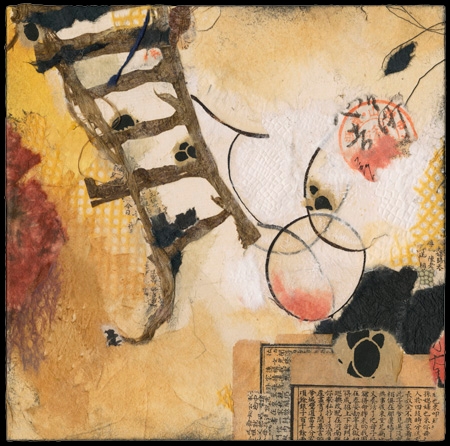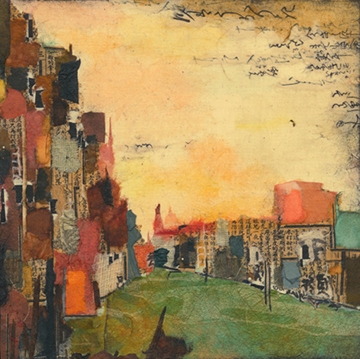The Art of Collage by Louise Forbush
When I entered Forbush′s studio, I was astonished by the works of art hanging on the walls. The movement of energy, like the fluidity of chi flowing within her pieces, was both inviting and enchanting. Some pieces reminded me of the serene movement of clouds and wind against the background of the warm rays of the sun. Every piece consists of many intriguing shapes and movements, collectively telling a story the meaning of which one just ca′t stop wondering about.
The way Forbush juxtaposes Japanese characters with collaged papers reminds me of the Tale of Genji, the Sanjurokunin ka shu, or the Heike Nogyo from the Heian period, when the onnade calligraphy was inscribed on bits of torn paper. She often incorporates kanji characters in her work, and sometimes gold flecks as the Heian masters did, mixed in with Western images and words.
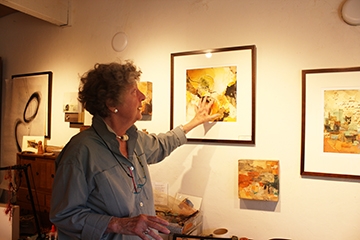
Forbush′s work seems abstract at first sight. But as one follows the shapes, torn edges, letters, or mysterious marks, a cityscape might emerge, a bending branch, some clouds, or a bird.
Many people are inclined to perceive in the abstract something not originally intended, they create something meaningful to them out of the abstract. But how about the words? Are recognizable words, such as ″faith″, ″kindness″, and ″gratitude″ or the unrecognizable characters, meant to interact with our consciousness? Subconsciousness?
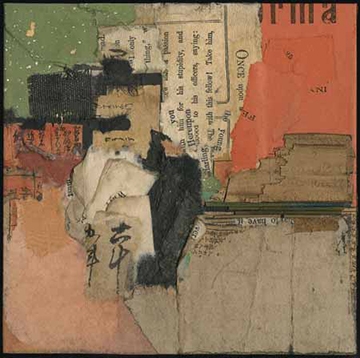
″Almost every piece has a story.″ Forbush pointed to a piece of her artworks next to the window, ″That one, for example, was inspired by a small book of Japanese fairy tales translated into English in the late 1800s and printed on creped paper with beautiful illustrations. It was a present given to my mother by a Japanese family when she was very young. I was reluctant to tear up those beautiful pages for my art decades later and was lucky enough to track down another copy in an old Boston bookstore! With further searching, I′ve since found six more of these old fairy tales, bits and pieces of which I incorporate into my work.
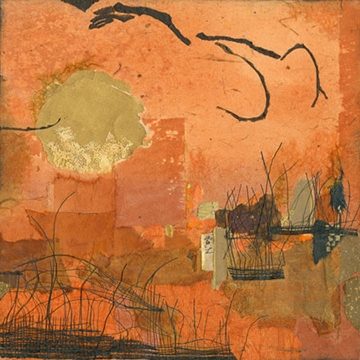
If one doesn′t know the story or the underlying meaning of the words or images, there is still a lot to perceive and appreciate just visually. The colors, mainly warm colors — oranges, golden yellows, the beige of old papers, manuscripts, music sheets — are complemented by smaller areas of turquoise or indigo blue… creating a sense of satisfying harmony. Warm, golden colors dominate her work. As she says, she′s still trying to capture in her work ″the color of golden rice plants drying in the sun at the edge of a Japanese village.″ She saw such rice plants when living in Japan in 1988.
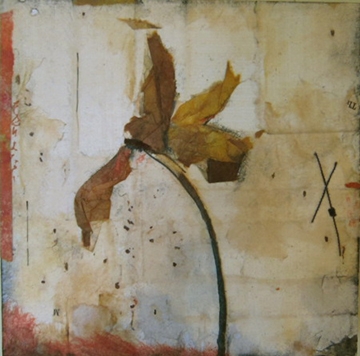
Creating the collage pieces
For each piece, Forbush uses a 2-inch deep, square wooden box, with a smooth Claybord top. She then puts each tiny piece of torn, cut, or folded paper in multiple layers creating a sort of sculptural terrain for each piece. Sometimes she mixes in materials other than paper, such as stones, woven fiber, bits of ivory, or silk and linen thread… things that seem to find a home among the papers. Although each piece contains many disparate elements, the lines, angles, colors, and textures seem to merge and become one.
A feeling of movement in each piece is very important in Forbush′s work. Says Louise, ″You always need to be going somewhere dynamically, or coming back from somewhere. This is true of music, which I studied in college, and also true of my artwork.″ Perhaps this is why I feel the chi energy in her work.
Forbush is often asked two questions: How do you know when a work is finished. Says Louise, ″My stomach tells me″ And how long does it take to do a piece? ″30 years!″
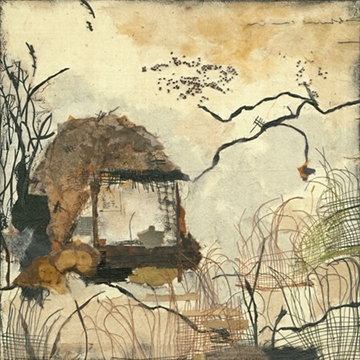
Inspiration
Forbush′s major inspiration has come from several trips to Japan, where she saw paper being made and absorbed all things Japanese. The first trip was in 1985 when she stayed at an inn that had been in the family for 7 generations, climbed in the Japan Alps, was introduced to wonderful Japanese food, and began to absorb the Japanese aesthetic. Then in 1988, she decided to leave her corporate job in San Francisco and live in Kyoto for a year.
That one year sojourn in Japan, with the intention of staying and learning about Japanese culture, turned out to be life-changing. Fascinated with paper, Forbush studied traditional, centuries-old paper-making techniques in Kyoto. She watched how paper was made in Bessho, a small village famous for paper north of Kyoto, found great old paper shops everywhere, and brought home a collection of treasures. Further trips in 1992 and more recently in 2016 allowed her to find even more unusual materials. There can never be too many!
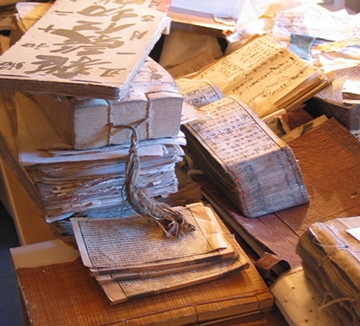
The materials themselves are inspirational to Forbush. ″I can′t stop buying them! Although I have enough material to last the rest of my life, I can′t resist another piece. Japanese crepe paper, old Japanese scrolls, stencils for dying kimonos, warm papers dyed with fermented persimmon juice, and my favorite paper, tengucho, which is so fine it is likened to the wings of a mayfly. I use it to create a soft sunset or the touch of light on the water.″
One time in a papermaker′s studio in Okayama, she noticed a huge piece of paper in rich indigo blue, hanging in a doorway, perhaps to keep out the mosquitos. When she asked if she could possibly purchase it, the man said, ″Oh, you can have that.″ ″His father repaired old screens, scrolls, and other artwork and never threw anything away. Since my papermaker knew what kind of art I did, he went to his father′s workshop and brought back an armload of old papers taken off some of these precious items and gave it to me. People can be so generous and kind.″
Subsequent to the year in Japan, she spent 12 years studying the Sogetsu style of ikebana, Japanese flower arranging, with her sensei Kosho Dixon. From ikebana she learned about contrast, color, texture, shape, size, focus, line, and most importantly, how to achieve asymmetrical balance. ″This was my art training.″
About the Artist
Forbush′s work is represented by the Stremmel Gallery in Reno, NV and ACCI Gallery in Berkeley, CA.
Louise′s Website
